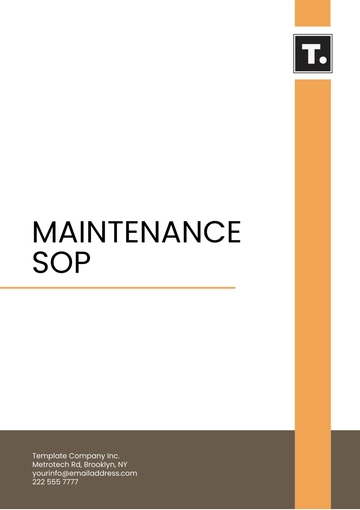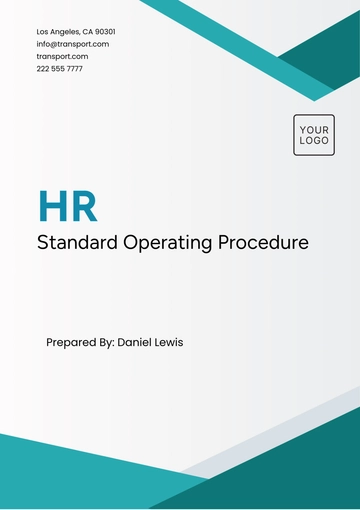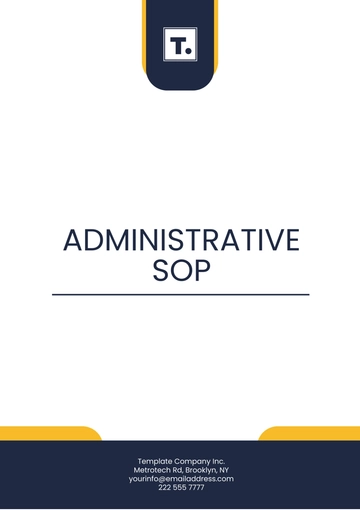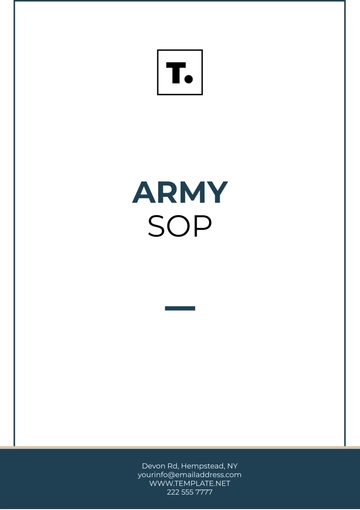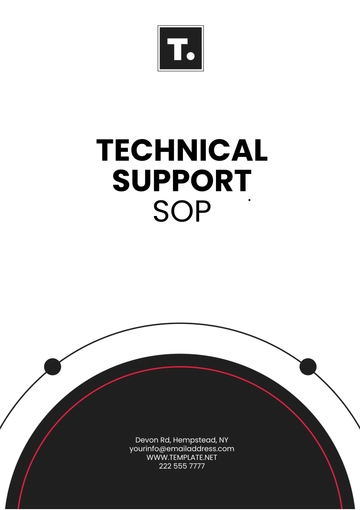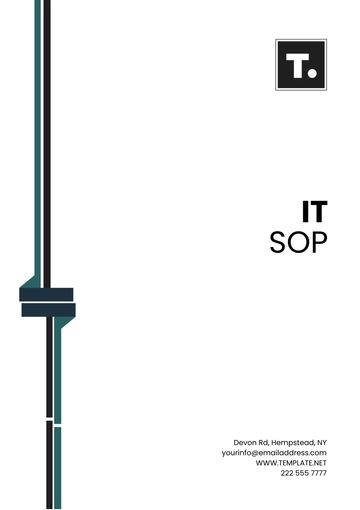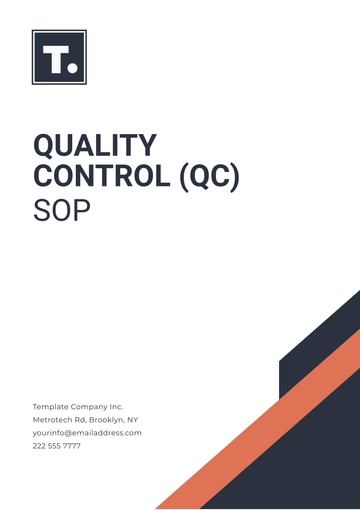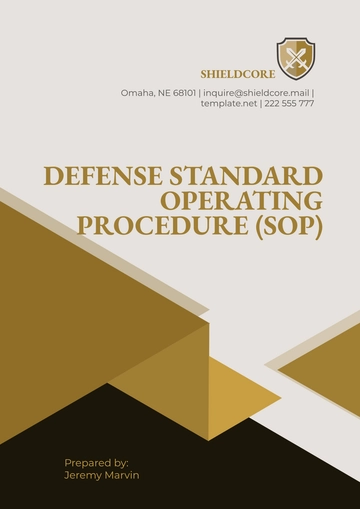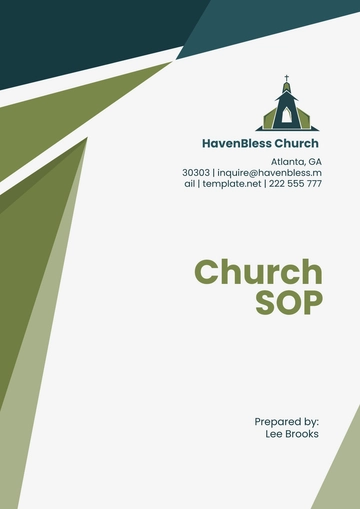Free Construction SOP

1. Purpose
This Standard Operating Procedure (SOP) outlines the procedures and guidelines to ensure safety, efficiency, and compliance with regulations on construction sites. It aims to standardize operations, minimize risks, and achieve high-quality outcomes.
2. Scope
This SOP applies to all construction activities carried out by [Your Company Name] employees, subcontractors, and consultants on all construction sites.
3. Responsibilities
Project Manager: Oversees the entire construction process, ensures compliance with SOP, manages project budget and schedule.
Site Supervisor: Directly supervises daily site activities, enforces safety protocols, and manages site personnel.
Safety Officer: Monitors safety practices, conducts regular safety audits, and ensures all safety regulations are met.
Quality Control Inspector: Ensures construction work meets quality standards and project specifications.
4. Procedure
4.1 Project Planning
Project Initiation:
Review project scope, objectives, and requirements.
Develop a detailed project plan including timelines, milestones, and resource allocation.
Risk Assessment:
Conduct a thorough risk assessment for all potential hazards.
Develop and implement risk mitigation strategies.
Permits and Approvals:
Obtain all necessary permits and approvals from local authorities before commencing work.
Ensure all regulatory compliance documents are up-to-date and accessible.
4.2 Site Preparation
Site Inspection:
Conduct a site inspection to assess ground conditions and any potential hazards.
Verify utility locations and ensure all services are safely disconnected if required.
Site Setup:
Establish site boundaries and install safety fencing.
Set up temporary facilities such as site offices, restrooms, and storage areas.
Equipment and Materials:
Ensure all construction equipment is inspected and in good working condition.
Verify that all materials meet project specifications and are stored properly.
4.3 Construction Activities
Daily Operations:
Conduct a daily briefing with site personnel to review tasks, safety protocols, and any changes.
Monitor work progress and ensure adherence to project plans and schedules.
Safety Protocols:
Enforce the use of Personal Protective Equipment (PPE) at all times.
Conduct regular safety drills and ensure compliance with safety regulations.
Quality Control:
Perform regular inspections to ensure work meets quality standards and specifications.
Document any deviations and take corrective actions as necessary.
4.4 Communication
Internal Communication:
Maintain open lines of communication among project team members.
Document and communicate any issues, changes, or delays promptly.
External Communication:
Liaise with clients, subcontractors, and other stakeholders as required.
Provide regular updates on project status and address any concerns.
4.5 Documentation
Record Keeping:
Maintain accurate records of all construction activities, inspections, and communications.
Ensure all documents are properly filed and stored for future reference.
Reporting:
Submit regular progress reports to project stakeholders.
Prepare and submit final project reports upon completion.
4.6 Completion and Handover
Final Inspection:
Conduct a thorough final inspection to ensure all work is completed to satisfaction.
Address any outstanding issues or punch list items.
Client Handover:
Prepare and deliver all relevant documentation, including warranties, manuals, and as-built drawings.
Conduct a final walk-through with the client to ensure their satisfaction.
Project Closeout:
Finalize all financial transactions and project documentation.
Conduct a project review to evaluate performance and identify lessons learned.
5. Safety Measures
Emergency Procedures: Establish and communicate emergency procedures for accidents, fires, and other incidents.
First Aid: Ensure first aid kits are available and personnel are trained in basic first aid procedures.
Incident Reporting: Report all incidents and near-misses immediately to the Safety Officer.
6. Training
Induction Training: Provide comprehensive induction training for all new personnel on site.
Ongoing Training: Schedule regular training sessions to keep personnel updated on safety practices and procedures.
7. Review and Revision
Periodic Review: Review this SOP annually or as needed to ensure it remains relevant and effective.
Revision: Update and revise the SOP based on feedback, changes in regulations, or project requirements.
8. References
Local Construction Regulations
Safety Standards and Guidelines
Project Specifications and Contracts
9. Approval
Prepared by: [Your Name], [Your Title]
Reviewed by: Beth Wynn, [Title]
Approved by: Evan Lee, [Title]
Effective Date: [Date]
- 100% Customizable, free editor
- Access 1 Million+ Templates, photo’s & graphics
- Download or share as a template
- Click and replace photos, graphics, text, backgrounds
- Resize, crop, AI write & more
- Access advanced editor
Streamline your construction projects with the Construction SOP Template from Template.net. This editable and customizable template provides a structured format for documenting standard operating procedures specific to construction. Use our AI Editor Tool to tailor safety protocols, operational guidelines, and compliance requirements, ensuring consistency, safety, and efficiency on-site. Download now!




